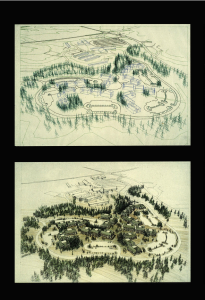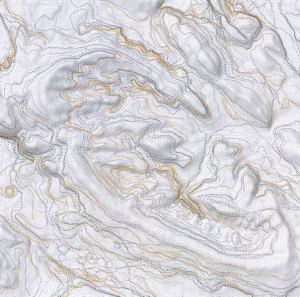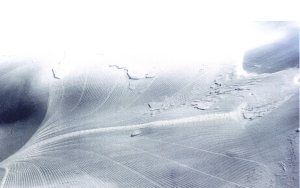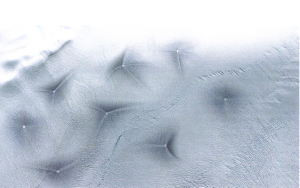Bradley Cantrell and Adam Mekies
Routledge

Codify: Parametric and Computational Design in Landscape Architecture is a collection of twenty-one essays on the role of computation in landscape architecture, edited by Bradley Cantrell and Adam Mekies. This book is compelling for three main reasons: first, because of the editors’ background and the curatorial line they stablish in their position essay; second, because the essay categorization is tailored to landscape architecture; and third, because the selected contributors’ heterogeneity spans academia and practice (e.g., Chris Reed and Alexander Robinson), from theorist Joseph Claghorn to artist Leif Estrada, in an intergenerational continuum from newly appointed assistant professor in practice at the Harvard Graduate School of Design (GSD) Elizabeth Christoforetti to technology pioneer Stephen Ervin. The result is a collection of essays that provides insight into the most up-to-date digital practices in the field.

The editors are both landscape architects: Cantrell is professor and chair of landscape architecture at the University of Virginia, and Mekies is a licensed practitioner with two years of experience at Design Workshop, a Colorado-based firm that introduced computation in their design process in the early 1980s. Rooted in both research and practice, the editors’ ambition is, in their words, to “find new models that more directly take advantage of the power of computation to build relationships and form new heuristic models in landscape architecture” (16). This statement is supported by a second introductory text, Christophe Girot’s essay on the role of topological studies in enabling critical thinking and relational diagramming in landscape architecture.
In their position essay “Coding Landscape,” the editors provide an overview of the history of computation and its introduction into landscape design. They start from the teachings of Carl Steinitz at the Harvard GSD in the 1960s and the seminal 1967 paper “Design with Nature” by Ian McHarg, which provided the foundation for the development of Geographic Information Systems. Moving on to more recent years, Cantrell and Mekies discuss the introduction of 3D-simulation in practice through the experience of Joe Porter, a founder of Design Workshop.

The editors’ approach implies that landscape design is a logical process based on generative and alterable computing abstraction. Given this premise, they define a difference between computation and computing. They conceive computation as the mere translation of analog ideas into a digital format for representation through commercial software, whereas computing is the “systematic method for critical thinking that emphasizes thought process and iteration over memorization and duplication” (27). Computing stresses the “linking of ideas” (27) via interfaces that make up for the lack of programming skills for designers. The result is a more chaotic, iterative design process, which suggests a potential role for designers as leaders in the field of software design to produce digital design tools able to facilitate it.

To support their thesis, the curators categorize the contributions into four groups: Syntax, Perception, Employ, and Prospective. For example, within the Perception section, Jillian Walliss and Heike Rahmann’s essay explores the potential of computation’s “big and small data” (133) to produce simulations that address climate change, envisioning the designer as a curator, constantly redefining the problem and the point of intervention as a consequence of knowledge provided by data analysis.
In the Employ section, Brian Phelps states that landscape architects’ strength in the city-making process is their ability to design and build cohesive projects: “in short, they see the big picture” (198). Therefore, practitioners should actively engage in the process of technology design and integrate such tools into an evidence-based workflow to maintain their leadership in the twenty-first century. Ricardo Jnani Gonzalez, an interaction designer at Project Aerial, closes the Prospective section by proposing a case for “cybernetic design” (289). He sees it as a strategy to overcome the attempt of ecological interventions to gain hegemonic control over the site ecosystem. He proposes a method of “embedding the iterative process of design into the design itself,” acknowledging the transient quality of relationships by designing an “aggregate, dispersed, and flexible network […] of cybernetic micro-interventions […] considering both the logic and the processes of operations, the mind, and the methods of physically interacting with the environment, the many bodies” (289).


One might not agree with all the contributors’ arguments. The historically rich debate on the relationship between digital technologies and design has often supported more conservative positions. Traditionally, conservatives have stressed the importance of physical modeling and hand drawing as creative practices. Nowadays, research in ethics and epistemology downplays the hype for the quantitative approach to the study of landscapes and urban spaces, shifting the conversation toward a critique of data-driven design. Codify has been published at a crucial turn in the debate: in my opinion, a few essays still imply a need for objectivity in the data-driven approach.
Overall, this collection succeeds in positioning the landscape designer as a crucial interlocutor in digital design tool development. This positioning differntiates Codify from other contemporary thinking about digital design, such as Karen M’Closkey and Keith VanDerSys’s Dynamic Patterns: Visualizing Landscapes in the Digital Age.1 According to Codify’s editors, it is essential to provide practitioners with software able to support their recursive, context-based design method. Moreover, in the framework of a wider cultural discussion on design, this innovative method could be extended to architects and practitioners at large. As the editors’ write, “The critical discussion of innovation for innovation’s sake on the one hand, and creative design on the other hand, requires a careful balance in business practices” (11).
This book urges both landscape designers and architects to position themselves in technical discourse and to engage landscape design at the software level. Cantrell and Mekies contribute to a debate that is far from sterile or obsolete. Emergent technologies such as artificial intelligence, the increasing use of machine learning, and their impact on practice will be discussed intensively in the next years.
Endnotes:
- Karen M’Closkey and Keith VanDerSys, Dynamic Patterns: Visualizing Landscapes in the Digital Age (New York: Routledge, 2017).
Paola Sturla is a lecturer at the Harvard GSD and was the 2018 Kiley Fellow in the GSD’s Department of Landscape Architecture. Born and raised in Italy, Paola is a registered architetto and paesaggista, and is currently a full-time academic researching artificial intelligence in design practice. Before entering academia, she practiced internationally in the field of infrastructure design. Paola holds a Master in Architecture degree (Politecnico di Milano, 2007), a Master in Landscape Architecture degree (Harvard GSD, 2011), and is a PhD candidate in the Urban Planning, Design, and Policy program at the Politecnico di Milano.
How to Cite This: Sturla, Paola. Review of Codify: Parametric and Computational Design in Landscape Architecture by Bradley Cantrell and Adam Mekies, eds. JAE Online. April 24, 2020. http://www.jaeonline.org/articles/review/codify#/.
All images used in this review are from Bradley Cantrell and Adam Mekies, eds., Codify: Parametric and Computational Design in Landscape Architecture (Abingdon: Routledge, 2018), 14, 24, 146, 292.






